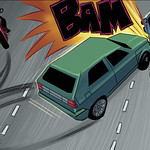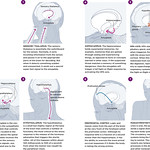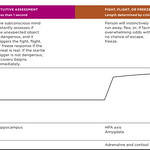Life and Death Design

What Life-Saving Technology Can Teach Everyday UX Designers
Emergencies—landing a malfunctioning plane, resuscitating a heart attack victim, or avoiding a head-on car crash—all require split-second decisions that can mean life or death. Fortunately, designers of life-saving products have leveraged research and brain science to help users reduce panic and harness their best instincts. Life and Death Design brings these techniques to everyday designers who want to help their users think clearly and act safely.
Emergencies—landing a malfunctioning plane, resuscitating a heart attack victim, or avoiding a head-on car crash—all require split-second decisions that can mean life or death. Fortunately, designers of life-saving products have leveraged research and brain science to help users reduce panic and harness their best instincts. Life and Death Design brings these techniques to everyday designers who want to help their users think clearly and act safely.
Testimonials
Katie Swindler does a brilliant job of breaking down our stress response, with vivid stories that demonstrate how the systems we create help or hinder at critical times.
Carolyn Chandler, Co-author, A Project Guide to UX Design and Adventures in Experience Design
To gain amazing insight from Swindler’s excellent book, you don’t need to be someone who designs for people in extremis. You just need to be someone who designs for people under stress, which is, of course, everybody.
Jon Bloom, Ph.D., Staff Conversation Designer, Google
Swindler’s memorable insights are effective for practitioners in all fields; you’ll be returning to this one again and again.
Melissa Smith, PhD, UX Researcher, YouTube
A great deep-dive for anyone interested in understanding how the products and services they build impact behavior, and how to actively design for that responsibility.
Lauren Liss, Assistant Professor, Columbia College Chicago
Table of Contents
Foreword by Lisa Baskett
Chapter 1: A Designer’s Guide to The Human Stress Response
Chapter 2: The Startle Reflex
Chapter 3: Intuitive Assessment
Chapter 4: Fight, Flight or Freeze
Chapter 5: Reasoned Reaction
Chapter 6: Recovery
Chapter 7: Alarms and Alerts
Chapter 8: Hero by Design
FAQ
These common questions and their short answers are taken from Katie Swindler’s book Life and Death Design: What Life-Saving Technology Can Teach Everyday UX Designers. You can find longer answers to each in your copy of the book, either printed or digital version.
- What do you mean by “life and death design”? Is this book about death?
Not really. This is a book about high-stakes designs with life-and- death consequences and all the ways your designs can help people in moments of extreme stress or crisis. It’s a book about designs that save lives. In particular, Chapter 8, “Hero by Design,” explores ways to help bring out the best in your users, helping them step up and save the day.
Sample Chapter
This is a sample chapter from Katie Swindler‘s book Life and Death Design: What Life-Saving Technology Can Teach Everyday UX Designers. 2021, Rosenfeld Media.
Chapter 1: A Designer’s Guide to the Human Stress Response
The human stress response is key to our survival as a species. A human without a stress response would never avoid pain, defend themself from an attack, or invent solutions to overcome problems. Stress is unpleasant, but that unpleasantness has a purpose. It’s by design. It’s meant to drive humans away from harmful things. Stress is a powerful motivator and a major driver of human behavior, which is why it’s critical that designers of all types of products, services, and experiences understand the ins and outs of the human stress response.
Stress takes many forms. There’s eustress, which is a healthy, beneficial type of stress experienced when engaging in enjoyable, challenging experiences. There’s also hypostress, caused by boredom, that drives the person to take action to relieve the tedium. But when most people think of stress, they think of distress, which is a stress response in reaction to negative or overwhelming things. Under the umbrella of distress are the two most common types of stress that scientists study: acute stress, stress in response to a momentary crisis that quickly passes, and chronic stress, which lasts weeks, months, or years.













